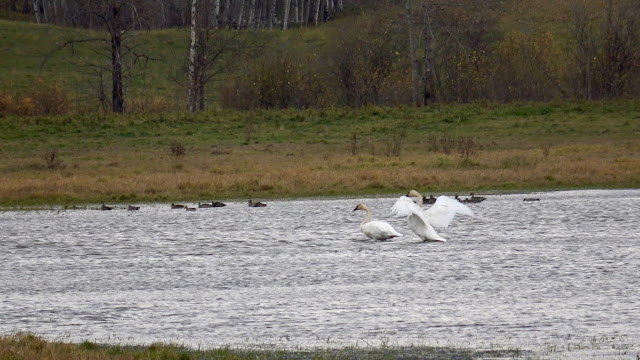It was a lot of fun to fix up my cabin. I stenciled curtains for the windows, and made bookcases and cupboards out of the wooden boxes and creates that my good were shipped in. It was my first, very own home and with 320 acres of land which would be mine someday — I was happy. I could go to bed when I pleased and get up when I pleased (something I could never do at home).
My first school was near Floweree. I boarded with Mr. and Mrs. Trackwell, who had a daughter named Rosemary. They were a fine Christian family and welcomed me into their home. My school room was a cabin that belonged to a young man who turned it over for a school during his absence. I had students from many different states which made the job very interesting.
Usually I would go over to my cabin on Friday nights and spend the whole weekend. One Sunday I had been promised a ride back to my boarding place and the ride did not materialize. About four o’clock I began to get worried and decided to walk. My boarding place was about eight miles from my homestead. When I reached Carter, the lady at the hotel told me if I would take a certain path it would cut off a few miles, so I decided to do that because it was getting late.
It was early October and I was dressed warm. I carried a hand bag with with a week’s supply of of clean clothing. I never did find the path, since it had long grown over. I stopped and looked in all directions. There was nothing in sight, not even a cabin. I had never seen this part of the country before. Suddenly it dawned on me that I was lost and almost as suddenly it was dark.
I just just kept going in the direction I thought was right. It seemed as if I was climbing up, then down. I would run into a herd of range cattle, and they would scamper off. They were more afraid of me than I was of them. I could hear coyotes howling and I had no desire to spend the night on the prairie.
I tried to follow a light, but it would disappear. Finally after walking and running for five hours, the light suddenly loomed up in front of me, and I saw a house. Through the window I could see children playing. I thought I was in Great Falls, it seemed as if I had walked that far. I rapped on the door and when they opened it, I staggered in, exhausted.
They removed my clothing which was soaked with perspiration and put me to bed. This was the Ainley family. Mr. Ainley was the grocer in Floweree. The next morning Mrs. Ainley drove me to school. This was the most harrowing experience that I had during my homestead years. I learned one lesson—never again to take a short cut that I know nothing about. I had wandered thought what was known as the Big Black Coulee. There were deep ravines and holes I could have fallen into and no one would have known what had happened to me.
Mr. & Mrs. Trackwell went to Floweree to church and they took me with them on Sunday. They would sometimes go to someone’s home for dinner or invite someone home with them. Mrs. Trackwell was a marvelous cook and on Saturday she would fix a large roast of beef, a large kettle of rutabagas, make pies and cakes. These people lived well for they had their own meat and vegetables. I met so many wonderful people through them. It finally came to where I had so many invitations on Sunday, I had a hard time deciding where to go.
On Thanksgiving they all gathered at church and brought food. It reminded me of the pilgrims.
I remember, as probably others do, of a night in winter when we had gone to church to some function and a blizzard developed. We were not able to go home and someone suggested we go to Mr. Ainley’s store and spend the night. We made coffee and sandwiches and played games until morning.
One Saturday morning Rosemary Trackwell and I started the hike to my cabin. We had gone about four miles when we saw a wagon approaching. The two men stopped and asked us if we wanted a ride. Rosemary was getting tired so we climbed up on the high spring seat atop several side boards. We had not gone far when we noticed a motorcycle coming(an almost unheard of thing in those days). We asked the driver if his horses would be afraid of the machine and he said he did not think so.
When that motorcycle got closer to us, those horses when crazy. The driver was thrown from the wagon and the other man jumped out, leaving Rosemary and I stranded in the racing wagon, pulled with wild, runaway horses. I saw we were headed toward a deep coulee and I yelled for Rosemary to jump.
We leaped from the wagon and I hit the ground with such force that I just doubled up. I could not get my breath and they carried me up to the hotel at Carter. I was put to bed where I remained for the day. I did not seem to be hurt, but I was in shock.
The horses had veered their course and straddled a barb wire fence, and finally hit a telephone pole. One horse was so badly cut from the fence that it died.






















